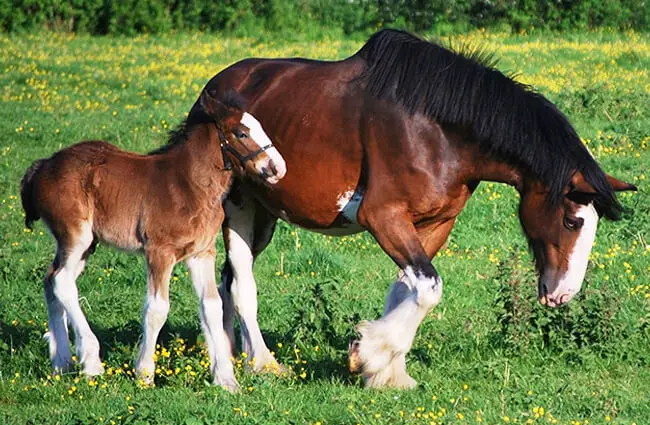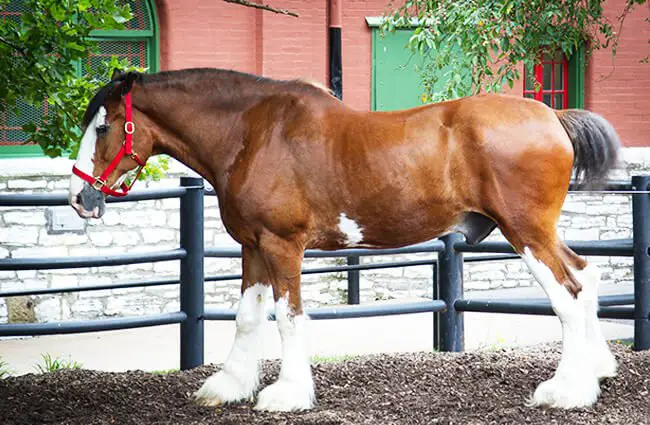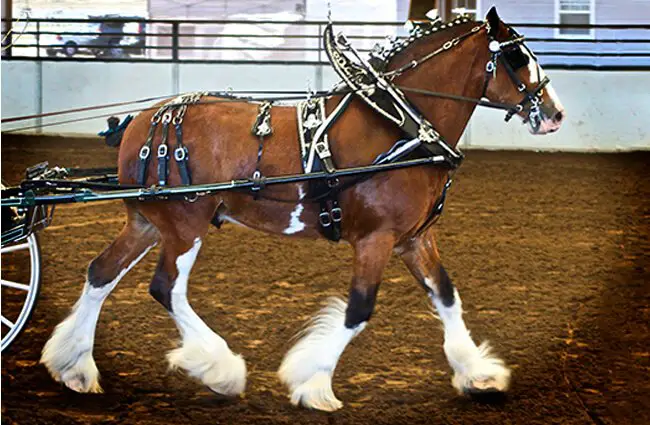Introducing the Majestic Clydesdale
The Clydesdale horse is a truly remarkable breed, instantly recognizable for its immense size, powerful build, and striking feathering on its legs. More than just a beautiful animal, the Clydesdale boasts a rich history, a crucial role in agriculture, and a lasting place in popular culture. This comprehensive guide will explore all facets of this gentle giant, from its evolutionary origins to its modern-day care and conservation.

Origins and Evolution
The Clydesdale’s story begins in the late 18th century in the Clydesdale valley of Lanarkshire, Scotland. Farmers sought a robust and powerful draft horse capable of handling the demands of agricultural work and transporting heavy loads. They achieved this through selective breeding of native Scottish draught horses, including the Fife, a smaller agile horse, and a Flemish stallion imported from mainland Europe. This crossbreeding produced a horse that was larger, stronger, and more refined than its predecessors.
The breed’s development was significantly influenced by the famous stallion Samson, born in 1813, who is considered the foundation sire of the Clydesdale. Samson’s offspring were highly sought after, and his lineage quickly became dominant within the breed. By the mid‑19th century, the Clydesdale had become the leading draft horse in Scotland, and its popularity spread rapidly to other parts of the world, including North America, Australia, and New Zealand.
Physical Characteristics
Clydesdales are renowned for their impressive stature. They typically stand between 16 and 18 hands high (64 to 72 inches, 163 to 183 cm) and weigh between 1,800 and 2,200 pounds (820 to 1,000 kg), making them truly imposing animals. However, it is not just their size that sets them apart. Several key characteristics define the Clydesdale breed:
- Feathering: The most distinctive feature is the abundant feathering, long hair that grows from the back of the legs and covers the hooves. It served a practical purpose in muddy fields by providing warmth and preventing the horse from sinking.
- Color: While bay, brown, and black are the most common colors, roan and grey are also seen. Traditionally, white markings, particularly on the legs and face, are preferred.
- Conformation: Clydesdales are known for their strong, muscular build, broad chest, and well‑sloped shoulders. Their legs are straight and powerful, and their hooves are large and well‑shaped.

Habitat and Distribution
Originally bred for the farmland and rugged terrain of Scotland, Clydesdales have adapted to a wide range of climates and environments. Today, they are found across the globe, with significant populations in North America, Europe, Australia, and New Zealand. While historically a working farm animal, the Clydesdale is now often found in show rings, on pleasure drives, and as a symbol of prestige. Their ability to thrive in various environments is a testament to their adaptability and hardiness.
Diet and Nutrition
As large animals, Clydesdales require a substantial amount of food to maintain their energy levels and muscle mass. Their diet primarily consists of high‑quality hay and pasture grass. Supplementation with grains such as oats or barley may be necessary, especially for horses engaged in heavy work or those with higher metabolic needs. Access to fresh, clean water is also crucial.
A typical Clydesdale will consume approximately 20 to 30 pounds of hay per day, along with several pounds of grain. Careful monitoring of their weight and body condition is essential to ensure they receive adequate nutrition.
Mating and Reproduction
Clydesdales typically reach sexual maturity around the age of four. Mares have a gestation period of approximately 11 months and usually give birth to a single foal in the spring. Foals are precocial, meaning they are born relatively well‑developed and can stand and nurse shortly after birth.
Breeding programs for Clydesdales often focus on preserving the breed’s desirable traits such as size, conformation, and temperament. Careful selection of breeding pairs is essential to maintain the genetic health and quality of the breed.

Ecological Role and Interactions
Historically, Clydesdales played a crucial role in agriculture, providing the power needed for plowing fields, harvesting crops, and transporting goods. Their presence helped shape the landscape and contributed to the development of rural communities.
Today, while their role in agriculture has diminished, Clydesdales continue to interact with their environment through grazing and pasture management. They also contribute to the ecosystem by dispersing seeds and providing habitat for other animals. Although generally peaceful, Clydesdales can sometimes compete with other grazing animals for resources.
Clydesdales and Human Culture
The Clydesdale has a significant place in human history and culture. They were the workhorses of farms and cities for generations, and their strength and reliability earned them the respect and admiration of people around the world.
In recent decades, the Clydesdale has gained even greater recognition through its association with the Budweiser brewery. The Budweiser Clydesdales, a team of eight horses, are a beloved symbol of American culture and are featured in numerous commercials and parades. This association has helped raise awareness of the breed and promote its conservation.

Interacting with Clydesdales: Safety and Etiquette
If you encounter a Clydesdale in a pasture or at a show, approach with caution and respect. These are large and powerful animals, and while generally gentle, they can be unpredictable. Always ask the owner or handler for permission before approaching, and follow their instructions carefully. Avoid sudden movements or loud noises, and never attempt to feed a horse without permission.
For zookeepers or horse handlers caring for Clydesdales, a consistent routine is crucial. This includes daily grooming, feeding, and exercise. Regular veterinary checkups are also essential to monitor their health and well‑being. Avoid overcrowding or stressful situations, and provide ample space for them to move and interact with other horses.
Conservation Status and Future Outlook
While the Clydesdale is not currently considered endangered, the breed is listed as vulnerable by some conservation organizations. The number of registered Clydesdales has declined in recent decades due to changing agricultural practices and a lack of economic incentives for breeding.
There is growing interest in preserving this magnificent breed. Numerous breed associations and conservation groups are working to promote the Clydesdale and ensure its survival for future generations. Efforts include establishing breeding programs, promoting the breed’s versatility, and raising awareness of its cultural significance.

Fun Facts About Clydesdales
- Clydesdales are known for their high stepping gait, a characteristic movement that showcases their power and elegance.
- The feathering on their legs serves not only as protection but also as a visual display of their strength and breeding.
- Budweiser Clydesdales travel extensively, making appearances at parades, sporting events, and promotional events across the country.
- Clydesdales have been used in a variety of roles, including logging, mining, and even pulling beer wagons.
- A Clydesdale foal can stand and nurse within hours of birth, demonstrating their precocial nature.

The Clydesdale horse is a true testament to the power and beauty of the natural world. From its humble beginnings in the Scottish countryside to its current status as a cultural icon, this magnificent breed has captured the hearts and imaginations of people around the globe. With ongoing conservation efforts and a growing appreciation for its unique qualities, the Clydesdale is sure to remain a beloved symbol of strength, grace, and heritage for generations to come.



![Red Angus Closeup of a beautiful Red Angus cowPhoto by: U.S. Department of Agriculture [pubic domain]https://creativecommons.org/licenses/by/2.0/](https://animals.net/wp-content/uploads/2020/03/Red-Angus-4-238x178.jpg)




![Red Angus Closeup of a beautiful Red Angus cowPhoto by: U.S. Department of Agriculture [pubic domain]https://creativecommons.org/licenses/by/2.0/](https://animals.net/wp-content/uploads/2020/03/Red-Angus-4-100x75.jpg)

